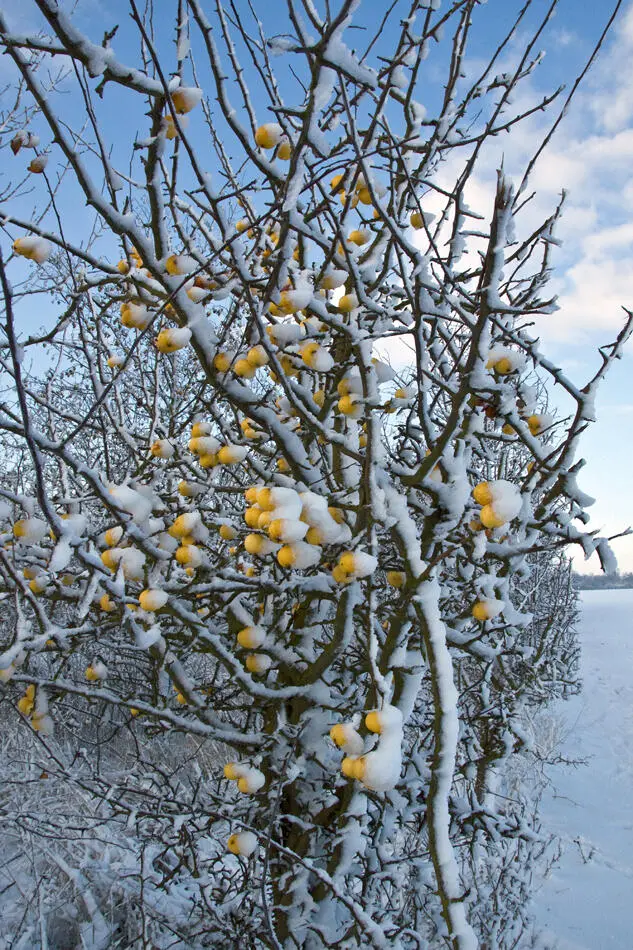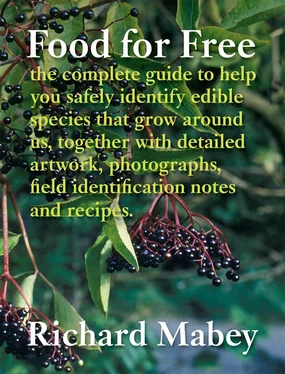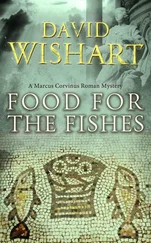Wild plums are ripe from early October, and, unlike sloes, are usually just about sweet enough to eat raw. Otherwise they can be used like sloes, in jellies, gin, and autumn puddings. Wild plums make excellent dark jams, and the French jam specialist Gisèle Tronche has pointed out how the addition of a little ground cumin seed and aniseed can improve conventional recipes. Alternatively try her late autumn, wild fruit humeur noir, which she describes as having ‘the colour of a good, healthy, black-tempered funk’.
Wild fruit jam
Crush together 800 g (2 lb) of stoned dark damsons and 200 g (8 oz) sugar, and leave overnight. Boil together 200 g (8 oz) of elderberries and 600 g (1½ lb) of blackberries for ten minutes. Add the damsons, another 600 g (1½ lb) of sugar, a tablespoon of cider vinegar and the juice of one lemon, and bring to the boil again. Cook for about an hour, until the desired consistency is reached. Pour into jars, leave to cool, and then seal.
Lamb and plum tagine
2 medium onions
50 g (2 oz) butter
1 tsp cumin seed
1 tbsp finely chopped root ginger
a few threads of saffron
3 cloves of garlic
1 tsp cinnamon
1 kg (2 lbs) organic lamb, shanks or small leg
500 g (1 lb) wild cherry plums, or damsons
water, stock or white wine
sloe or damson gin (optional)
In a casserole or thick saucepan, sauté the onions in the butter with the cumin seed, for about 10 minutes, until the seeds have burst and the onions are golden. Add the ginger, saffron, crushed garlic and cinnamon. Cook together for a couple of minutes. Fry the lamb in the mixture quickly, turning it so that all sides are slightly browned and well coated with the spices. Add half the damsons, and about a cupful of water, stock or white wine. Cook gently in an oven at 150°C/gas 2, for 2 hours, checking the level of the liquid once or twice. Fifteen minutes before the end, add the remainder of the damsons and a small glass of sloe or damson gin – if you enjoy the almond taste given by plum-family stones. The liquid should be appreciably thicker at the end (give it a sharp boil for 5 minutes on top of the stove if not), and the lamb coming free of the bone.
Crab Apple Malus sylvestris
A small deciduous tree, frequent in woods, heath and hedges. Leaves are oval and often downy. White or pink blossom appears April – May, and a yellowish-green fruit from July.
Most of the apples growing wild in the countryside are not true crab apples, but what are known as ‘wildings’ – that is, apples that have sprung naturally from the discarded cores of cultivated varieties. Apple varieties and species cross-fertilise very readily: this is why apple trees must be propagated by grafting if they are to stay true, and why it has been possible, over the last few centuries, for breeders to raise more than 6,000 named varieties. So don’t despise wilding apples. They are often sweet enough to eat raw, and here and there, for instance, in a hedge by an old orchard, you may find a descendant of an obsolete variety such as Margil, which still has some of its parents’ characteristics. True crab apples, which tend to be confined to old hedges and open woods, are best used for tart jellies and for pickling. They can be identified by their spiny branches, and by the smaller, harder and greener fruit. Use them not only by themselves, but mixed with other wild fruits for jellies or ‘hedgerow jam’; blackberry, elderberry, wild plums and hazelnuts are good companions. Alternatively, pickle the apples, unpeeled, in spiced vinegar as an accompaniment to roast pork. Thrown in the pan with the meat, they will burst and baste it with their juices.
Uncooked apple and pear chutney
This is a recipe developed by my brother David from an Australian version, which in turn seems to have originated in the East End of London, to judge from its rhyming-slang nickname ‘Stairs Pickle’. It’s unusual in being uncooked.
450 g (1 lb) sharp apples
450 g (1 lb) firm pears
25 g (1 oz) root ginger
2 cloves of garlic
450 g (1 lb) raisins
450 g (1 lb) white sugar
600 ml (1 pint) cider vinegar
2 tsp of salt
1 tsp chilli powder
Peel and core the apples and pears, and finely chop the root ginger and garlic. Mix them thoroughly with all the other ingredients, cover and leave in a cool, dark place for 3 days. Bottle the chutney in sterilised jars. It will be ready to use in about a month.
© David Hosking/FLPA

© David Hosking/FLPA
Apple cheese
Crab apples may be used to make an apple cheese, though wilding apples may produce an even better result. Wash, core and roughly chop about 900 g (2 lbs) of fruit, and simmer in 300 ml (½ pint) of water. Once the fruit is soft, purée by pressing through a sieve. Add 450 g (1 lb) brown sugar to each pound of purée, and pinches of cinnamon, ginger, nutmeg and cloves, bring to the boil and simmer until very thick. Bottle in the usual way. When cool it should have the consistency of a soft cheese.
Apple mash
potatoes
cooking apples
butter
seasoning
Use potatoes and apples in the proportions of two to one by weight. Peel and halve the potatoes and bring to the boil. After about 10 minutes add the peeled, cored and chopped apples. They’ll both be cooked in another 10 minutes. Drain, return to the saucepan, add a few slivers of butter and some salt and pepper, and pound with a masher or fork. Do not add any extra milk, cream or oil, as there is plenty of liquid produced by the apples.
Jugged celery and windfalls
This is a wonderful old country recipe, gathered by Dorothy Hartley. It can be used as either a starter or a vegetable with pork or lamb.
For 2 people
equal weight of windfall apples and celery, say 250 g (½ lb) each
2 cloves
muscovado sugar
4 rashers of bacon or ham
Wash and trim the apples, but leave their skins on. Chop roughly and stew them with a couple of cloves and a spoonful of muscovado sugar in as little water as possible, until they are a firm pulp. Put a couple of slices of bacon in the bottom of the tallest, narrowest cooking pot you possess, pile the apple purée on top, then pack in as many sticks of celery as you can. They must be in an upright position, as it is the apple juices running down the fibres of the celery that makes this dish. Spoon out any apple purée that overflows, trim the sticks level and cover their tops with 2 more bacon rashers, cut to fit. Then bake in an oven at about 180°C/gas 4 for half an hour. If you don’t have a suitable tall cooking jug, an ordinary casserole dish will do.
Rowan, Mountain-ash Sorbus aucuparia
Widespread and common in dry woods and rocky places, especially on acid soils in the north and west of the British Isles. A small tree, up to 20 m (65 ft), with fairly smooth grey bark, toothed pinnate leaves, and umbels of small white flowers. Fruit: large clusters of small orange or red berries, August to November.
The rowan is a favourite municipal tree, and is planted in great numbers along the edges of residential highways, but you should not have too much trouble finding wild specimens. Their clusters of brilliant orange fruits are unmistakable in almost every setting, against grey limestone in the uplands, or the deep evergreen of Scots pine on wintry heaths. Unless the birds have got there first, rowan berries can hang on the trees until January. They are best picked in October, when they have their full colour but have not yet become mushy.
You should cut the clusters whole from the trees, trim off any excess stalk, and then make a jellyin the usual way, with the addition of a little chopped apple to provide the pectin. The jelly is a deliciously dark orange, with a sharp, marmaladish flavour, and is perfect with game and lamb.
Читать дальше













